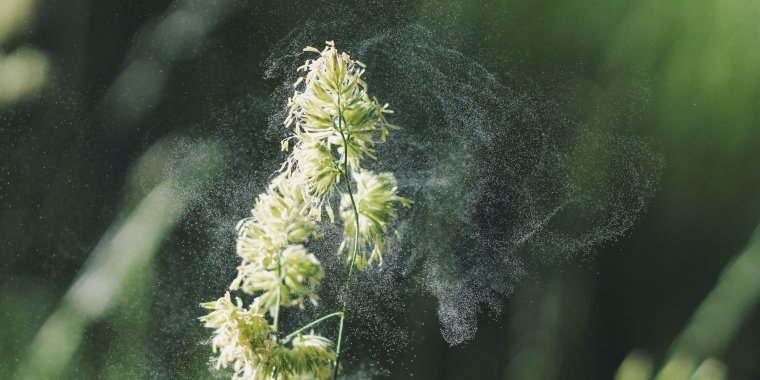| Health / Health News |
Longer, more intense allergy seasons could result from climate change
Allergy seasons are likely to become longer and grow more intense because of increasing temperatures caused by climate change, according to researchers at the University of Michigan.

Pollen emission. Photo: Alex Jones/Unsplash
"The research adds important information to our knowledge about the potential adverse effects of climate change on human health and is especially important for those who suffer from pollen allergies or from asthma," said Sylvia Edgerton, a program director in NSF's Division of Atmospheric and Geospace Sciences.
By the end of this century, pollen emissions could begin 40 days earlier in the spring than they did between 1995 and 2014. Allergy sufferers could see the season last an additional 19 days before high pollen counts subside.
In addition, the annual amount of pollen emitted each year could increase up to 200%.
"Pollen-induced respiratory allergies are getting worse with climate change," said Yingxiao Zhang, first author of a paper. "Our findings can be a starting point for further investigations into the consequence of climate change on pollen and corresponding health effects."
The researchers developed a predictive model that examines 15 of the most common pollen types and how their production will be impacted by projected changes in temperatures and precipitation.
They combined climate data along with socioeconomic scenarios, correlating their modeling with the data from 1995 through 2014. They then used their model to predict pollen emissions for the last two decades of the 21st century.
Allergy symptoms run the gamut from the mildly irritating, such as watery eyes, sneezing or rashes, to more serious conditions, such as difficulty breathing or anaphylaxis.
The grasses, weeds and trees that produce pollen are affected by climate change. Increased temperatures cause them to activate earlier than their historical norms. Hotter temperatures can also increase the amount of pollen produced.
Senior author Allison Steiner said the modeling developed by the team could eventually allow for allergy season predictions targeted to different geographic regions.
"We're hoping to include our pollen emissions model in a national air quality forecasting system to provide improved and climate-sensitive forecasts to the public.” (National Science Foundation)
YOU MAY ALSO LIKE





